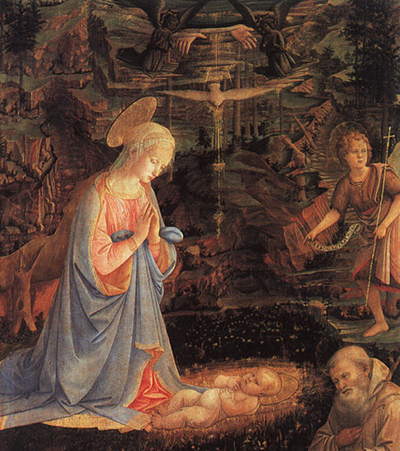The magnificent art of Paolo is something that has inspired a lot of upcoming artists that are out there. Paolo has drawn several pieces of literature concerning the life of Christ.
These paintings are distributed all over the world. The artist is of unmeasurable greatness when it comes to the painting of theological stories especially those concerning the life of Christ with a good example is The Adoration of the Child by Paolo Ucello. One of these numerous paintings is The Adoration of the Child by Paolo Uccello painting.
This painting was drawn between the years 1397 and 1475. Though the story of the original art is unclear, we are informed that the portrait was first drawn by the priest to be on a wall. Later the painting is said to have been hacked off the wall. But unfortunately, there were only two fragments of the painting that survived. The two pieces are available for viewing at the first chapel on the San Martino church in Bologna where it was initially drawn.
Many copies of this specific painting have been made. This piece of art has inspired many upcoming artists such as Hieronymus Bosch to make a copy of the painting. The simple sketch that was once drawn by a church priest and father to be was initially drawn on the walls of the church where he was learning theology. His paintings have kept his story and interest about religion going on for decades. Though it’s not entirely confirmed if the artist made copies of the original painting. We can entirely approve that the original painting of The Adoration of the Child by Paolo Uccello was first made on the wall at the church where he was learning theology.
The artist has made several religious Christian paintings concerning the life of Christ. It is only suitable to say that his interest in religion specifically the story of Christ must have been what inspired him to make the painting. We can also safely conclude that since he made these paintings while still undergoing his theological education into becoming a priest, then the paintings could have been a class assignment to talk about the adoration of Christ. Another conclusion that seems to add up is the fact that the boy was usually attracted to art and this could have been the only way to draw.




